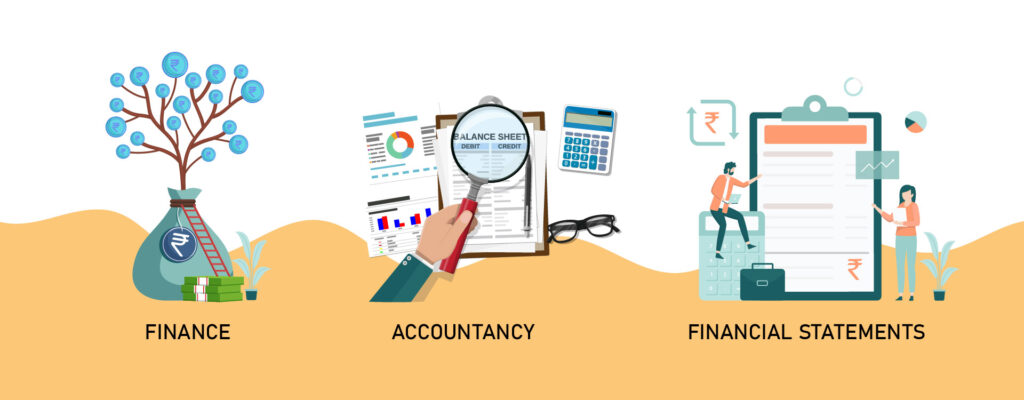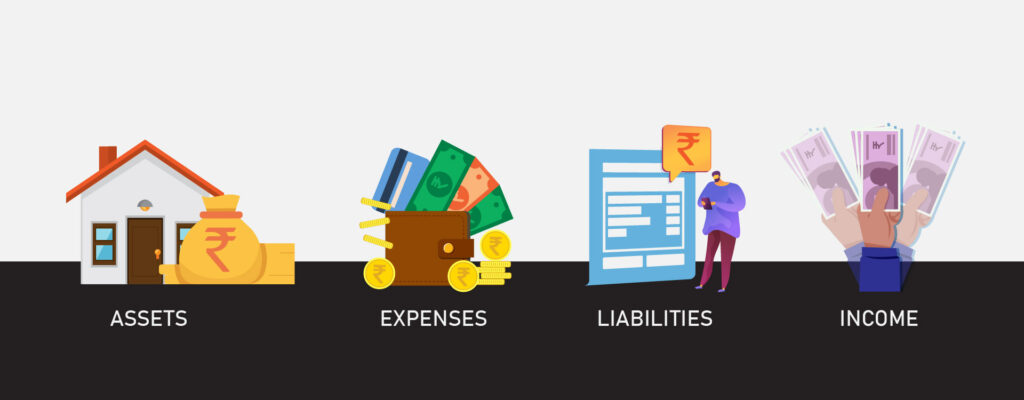Book: FUNdamentals of Financial Statements
Author: Chinmay Ananda
Published by: Zaang Publications/Finance Academy, Australia
Year of publication: 2015
I have got the chance to read many articles and books on finance and financial statements written to educate non-finance executives and entrepreneurs in the finance domain. I have written a few articles in this genre. So, when I picked up Chinmay Ananda’s book ‘Fundamentals of Financial Statements’ to read I thought it to be another book in the same category targeting the same type of readers. But I was taken by surprise.
The cover, page layout and the style of the book give a feel of simplicity and the initial thought that would come to the reader’s mind is of mediocrity. After finishing this book, I felt that this book could be a good read even for finance professionals. Take a look at the way the difference between Asset and Expense or between Liability and Income or between the items coming to Profit and Loss and Balance Sheet are explained. Here is an example from the book – “If any purchase is consumed before the Balance Sheet date it becomes expense in the Profit and Loss statement and if it is not consumed before the Balance Sheet date it becomes Asset in Balance Sheet.” Beautifully articulated!
However, the book is written by Chinmay with non-finance readers in mind and it does full justice to its purpose and objective. Like the FUN in capitals in the word fundamentals of the title manifests, it is fun to read this book and understand how to read financial statements. It is a book on finance that even a non-finance person who hates finance and numbers will love to read till the end. More importantly, the book will tempt you to explore more about finance and financial statements.
‘‘
If you can’t explain it simply, you don’t understand it well enough
-Albert Einstein
A Book on Finance for All Entrepreneurs
What I enjoyed more about this book is the way it is structured and narrated – storytelling style and narrative in such a way that anyone who reads English can relate to it and get a gist of the subject. There are no debits and credits explained in accountancy language, no finance and accountancy jargon and terminologies used in the book to explain the fundamentals, sometimes even complex topics, of finance and financial statements.
A lot has been written on the need for entrepreneurs to understand finance, accountancy and financial statements so that they will be able to do budgeting, manage cash flow, control expenses, make investment and funding decisions. Not just that, it will help them get a feel of the value of their business, understand growth and profitability metrics and take winning business decisions. Despite having a good idea and funding, we have seen many startups failing miserably for want of financial management and control in place. This happens mostly when the owner(s) or founder(s) have no idea of finance and its importance in business.
Non-finance Person Writes a Book on Finance
What might have worked well for this book is the author, Chinmay Ananda, himself being a non-finance person who did his bachelor degree in engineering and MBA with a non-finance specialisation. He taught finance himself and now teaches finance and consults entrepreneurs on financial and business problems. However, he has done justice to the Einstein quote “If you can’t explain it simply, you don’t understand it well enough” that he reproduced in his book a few times.
In the process of explaining financial statements in a way that anyone can understand, the author covers almost all topics coming under the umbrella of finance. The way he has explained Operating Profit, Profit Before Interest, Tax, Depreciation, amortisation (PBITDA), Profit Before Tax (PBT), Profit After Tax (PAT), Earning Per Share (EPS), Dividend Policies, Leverage / Profit Volume (PV) Ratio etc., makes the reader believe that finance is a very easy subject to learn and understand. The way Chinmay has articulated what happens to profit, what comprises owners’ funds, what is the meaning of return on capital employed, how differently debt and capital impact profit and tax etc., is simple for the understanding of non-finance readers.
It is not just about learning finance and financial statements for an academic purpose that is attempted in this book but how the knowledge of finance and ability to read financial statements can be leveraged for the profitability, sustainability and growth of your business, particularly SME and startup businesses. It provides owners and entrepreneurs insight into the nuances of finance and how they help them in steering their business to growth and profitability.
The book is not purely confined to finance in the strict sense as it ventures to explain how a company is formed and why a company is considered as a separate legal entity separate from its promoters or founders. On the way, it explains how capital is brought in and why it is shown on the Liabilities side of a Balance Sheet. It is in an amazingly simple way the debits and credits are explained without resorting to the help of the golden principle of accountancy.

Owner vs. Business Perspective
He explains Debit and Credit this way – “Debit money is going out of the business. For Assets, you may say we have got land and machinery. But to purchase land and machinery, money first goes out of the business. That is the reason it is important to see it from a business perspective and not from an owner’s perspective. From the business perspective if the money is going out of the business either it becomes an Expense or creates an Asset.
Credit, money is coming into the business. If it is by selling the product or service, it is called Income. If money comes into the business because of borrowing then it becomes a Liability.”
How beautifully he put it so that someone who has not gone to college can understand it easily! All you have to remember is, when money goes out of the business it is Debited and if money comes into the business it is Credited. However, it can confuse the reader a bit as it does not say which part or leg of the transaction is to be debited or credited.
Financial Statements for a Layman
The book then goes on to explain the three financial statements viz. Profit and Loss/Income Statements, Balance Sheet and Cash Flow Statement. In layman language the book makes you understand why there are three financial statements and what are their uses. It also throws light on the difference between profit and money/cash balance, why cash is more important than profit, all without using any finance jargon or formulas or theories.
The very easy manner in which it is explained as to what are assets, expenses, liabilities and income and how and why they are classified so, without employing the language and technical terms of accountancy but in a common man language is commendable.
‘‘
Employees should have sufficient information about the business and its model as every decision every employee takes impacts the profitability of the company.
What are the Most Common Financial Mistakes?
Look at some finance mistakes that are explained in the book, the first one is “Selling a Product or Service for Less than the Cost of Liabilities”. Chinmay goes on to explain how the cost of liabilities is calculated and the entire concept with an example for the reader of any level to understand.
Likewise, another finance mistake – “Investing Short-term Liabilities into Long-term Assets” is explained with simple examples like “Life of loan should be equal to the life of an asset”.
Learn about Financial Metrics from this Book on Finance
Equally important is the read on various financial metrics:
- Profitability
- Liquidity
- Operating ratios
- Break-even point (BEP)
- Profit v Money.
BEP is an important study in managerial accounting, used to calculate the point at which a business is not at profit or loss. It is inevitable to know the difference between the fixed and variable cost to understand the fundamentals of BEP and it is also elaborated. He explains in simple terms with examples as to how this concept is important in various business decision making.
Likewise, understanding the difference between Profit and Money or Cash is crucial. All profit is not cash and therefore the profit shown in the Profit and Loss statement and cash balance in the cash flow statement won’t be the same. There are many reasons for this such as non-cash expenses like depreciation appearing in profit and loss statements but not in cash flow statements or sales invoices becoming part of profit but not of cash till the sales amount is collected.
One important chapter in the book – What is happening with Profit? – throws light into what happens to the profit you make and how important is this understanding for strategic decisions. Profit is reinvested in the business as part of diversification or expansion or acquisitions. It is also used to replay your liabilities. Using profit for paying dividends to the shareholders or the investors is arguably the most important purpose of profit.

The Untouched Topic by Many Books on Finance
He has devoted one chapter to crucial topics that most books and articles have not touched. This is about educating every employee in your organisation to make profitable decisions. For that, employees should have sufficient information about the business and its model as every decision every employee takes impacts the profitability of the company.
At times, the author has moved away from the core topic to areas like cost accounting, startup mentoring etc. However, it is not to be considered as a drawback since the author has reiterated a few times in the book that everything you do or any decisions you take in business have implications for finance.
Though looking like straying initially, touching upon the concepts of marginal costing, contribution analysis, fixed vs variable expenses is a real value add to the readers, that too without complicating the concepts. The reason why the word ‘straying’ is used here is that these analyses don’t form part of standard financial statements but internal management reporting.
Different Perspectives to Financial Theories and Metrics
Another exciting part is the last portion of the book where Chinmay explains solutions to some critical problems that small entrepreneurs face with real-life instances as part of his consulting career.
One portion of the book that I was not able to agree to fully was about the differentiation between Performing Assets and Non-Performing Assets. The performing asset should earn returns to take care of a non-performing asset is like the arguments that business functions in a company feed back-office function. This is not fully true like the fact that every organ in a human or animal body is important. Another is the fact that it can create confusion about the use of the terminology.
Non-Performing Assets
A non-performing asset to most people is a bank loan that is subject to late repayment or is unlikely to be repaid by the borrower in full. There is a high likelihood of readers getting perplexed here.
Overall, this is a fantastic book not only for non-finance executives and entrepreneurs but for finance professionals too. It gives insight into finance and business effortlessly and sometimes different perspectives to financial theories and metrics. This book is more pertinent for startup and SME entrepreneurs during uncertain times like the ongoing pandemic or recessionary period.





